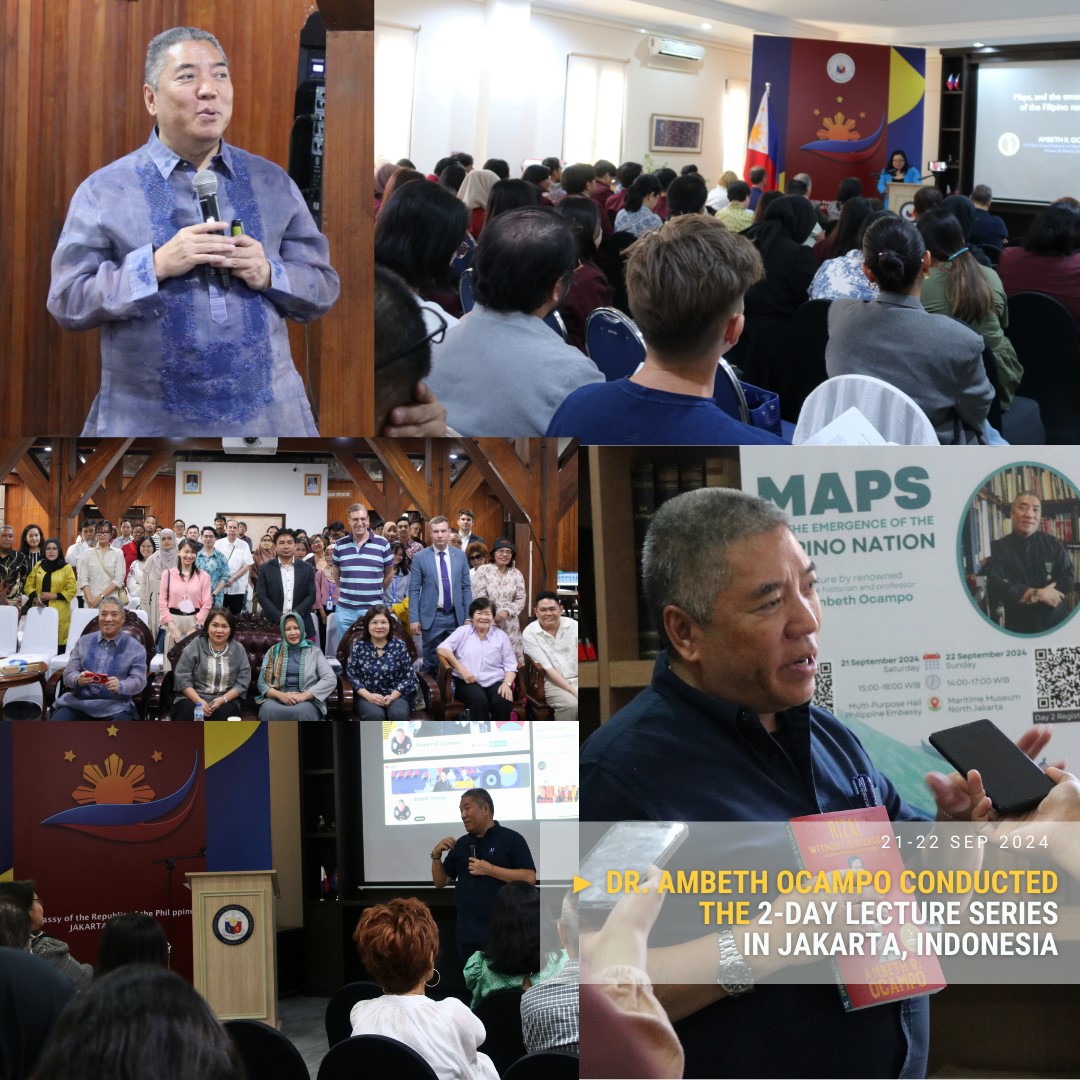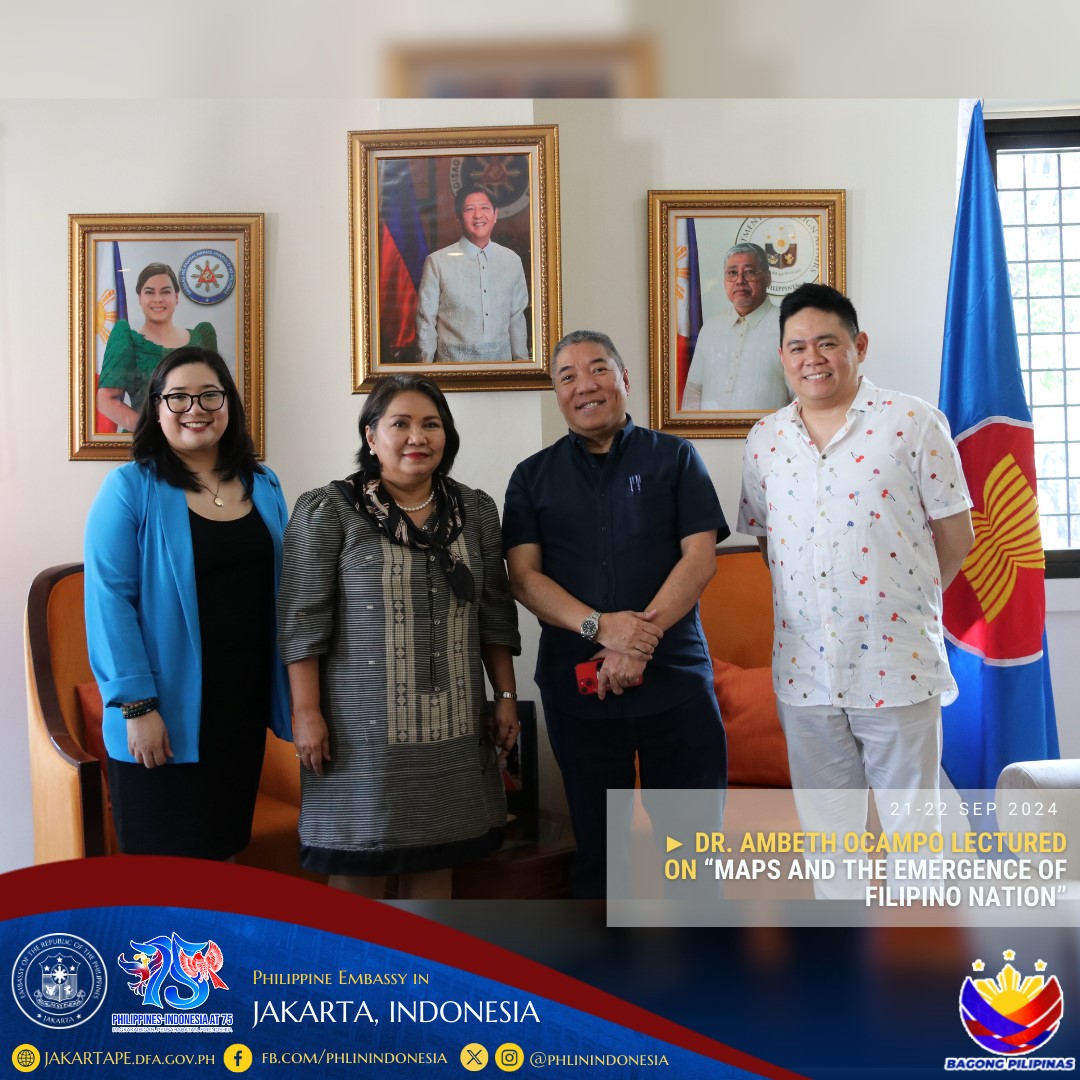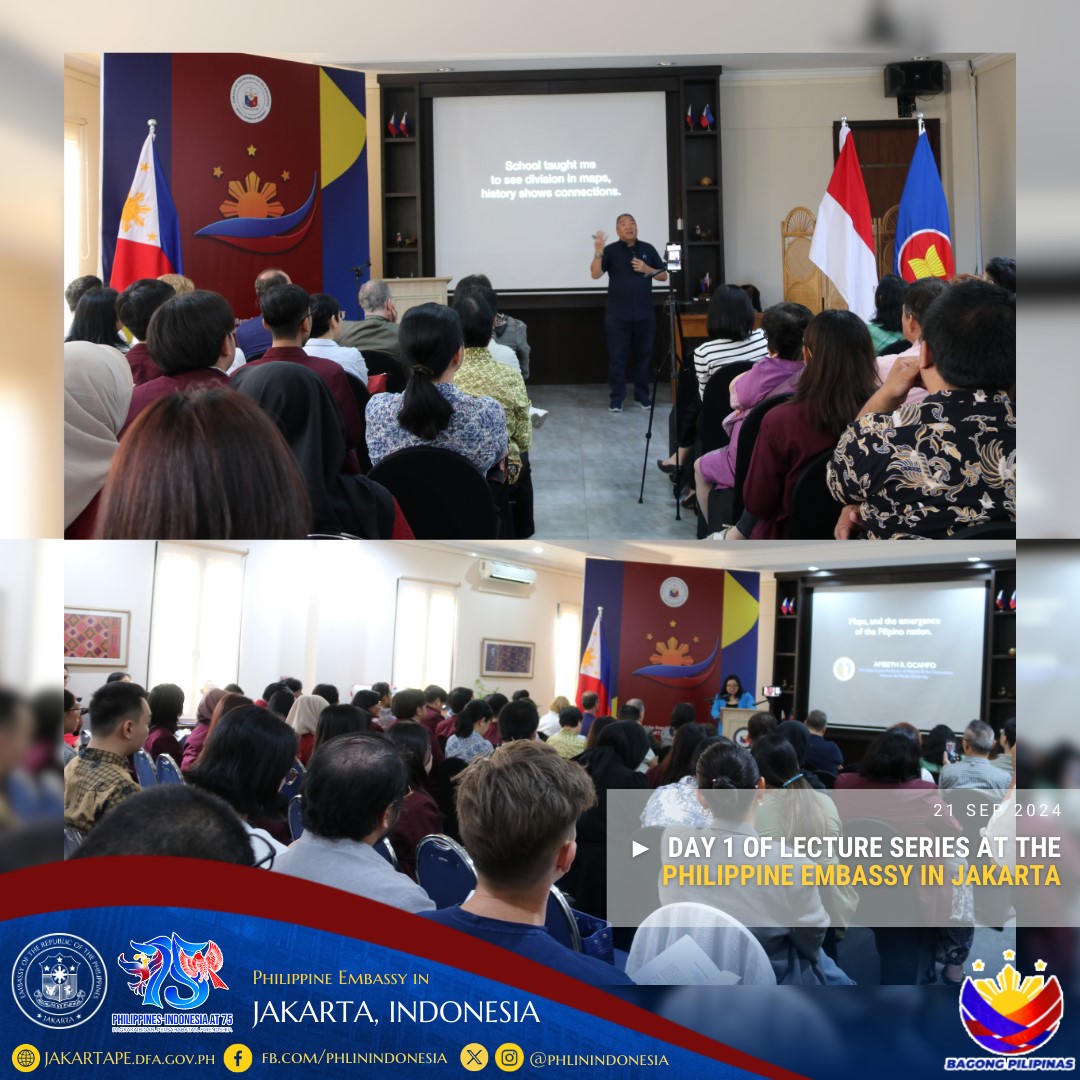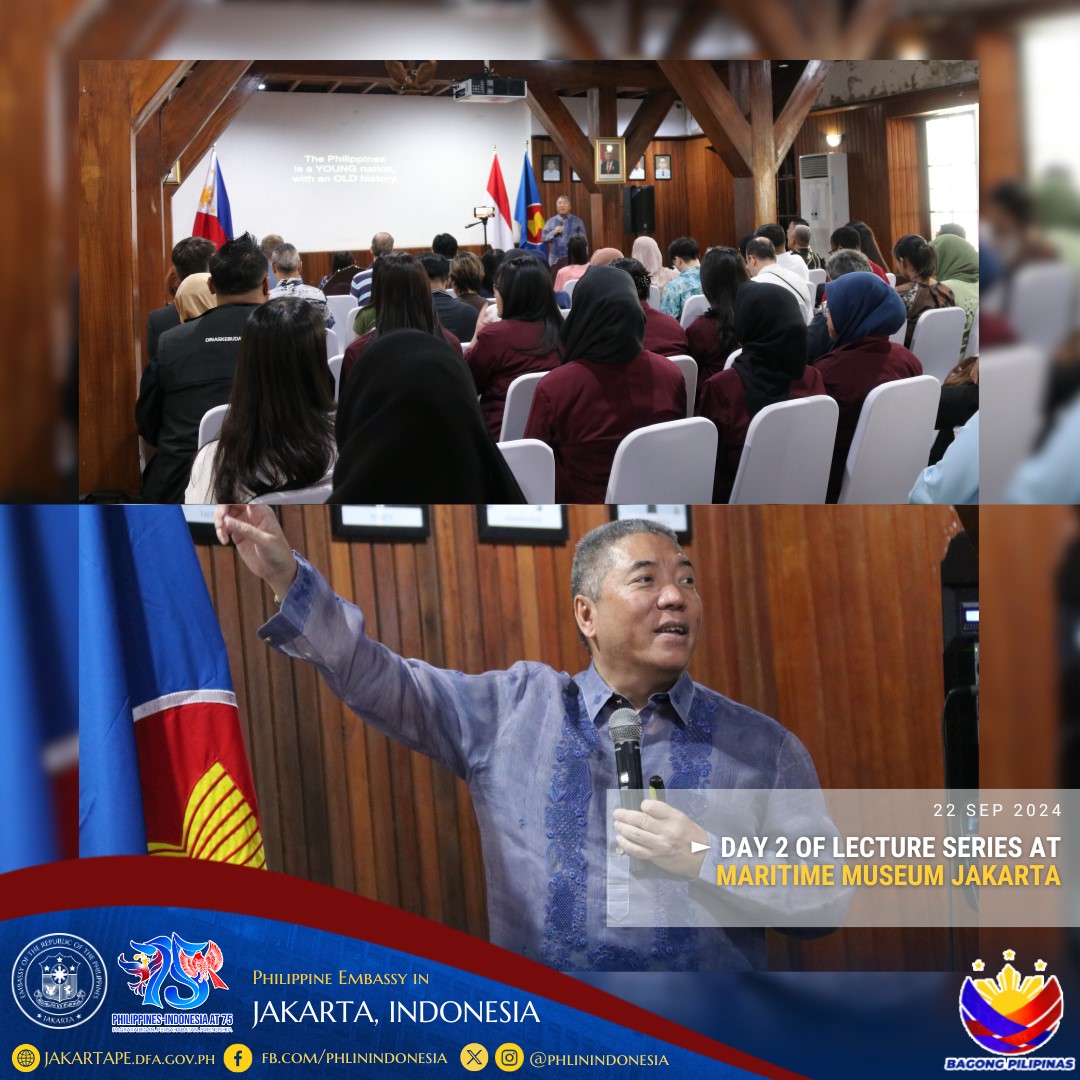
(22-23 September 2024, Jakarta) - In line with this year’s celebration of the Maritime and Archipelagic Nation Awareness Month (MANA Mo) and the 75th Anniversary of the Philippines-Indonesia Diplomatic Relations, the Philippine Embassy in Jakarta invited renowned public historian Dr. Ambeth R. Ocampo to deliver a series of lectures showcasing the rich maritime heritage of the Philippines and its role in shaping the concept of Filipino nationhood.
Entitled “Maps and the Emergence of the Filipino Nation,” the lectures were conducted at the Embassy’s Chancery and at the Maritime Museum Jakarta on 21 and 22 September 2024, respectively. The lecture at the Maritime Museum Jakarta also served as a side event to the ongoing Arthefact 3.0 Exhibition of the museum which will run until 20 October 2024.
The lectures were well-attended by Filipino community members, diplomatic corps, and Indonesian students and professionals, as well as the local media.
“The phrase ‘MANA Mo’ literally means ‘your heritage’ in Filipino. Hence, the maritime and archipelagic nature of the Philippines form part of our heritage as Filipinos. The vast waters that separate the various islands of the Philippines also connect and unify us amidst the diversity of cultures, language, and religious faiths. This is also something that we share with Indonesia, a fellow maritime and archipelagic nation whose unity amidst the diversity is enshrined in its concept of ‘Pancasila’,” Philippine Ambassador to Indonesia Gina A. Jamoralin said in her welcome remarks.
In his lecture, Dr. Ocampo highlighted the role of water as connecting, and not separating, the islands of the Philippine archipelago. Maps serve as a representation of reality and help establish national identity. In the context of the ongoing South China Sea/West Philippine Sea standoff, maps, particularly the Murillo-Velarde Map, played a crucial role in establishing the Philippines’ historical claim over the disputed areas.
Lastly, Dr. Ocampo established the importance of culture and history in understanding our maritime heritage, as well as in finding connections in our shared history with Indonesia. END










